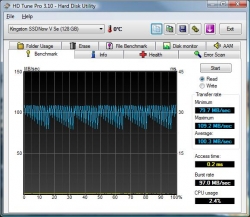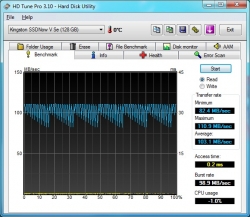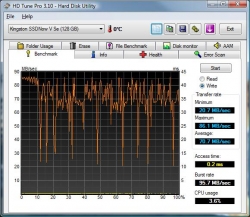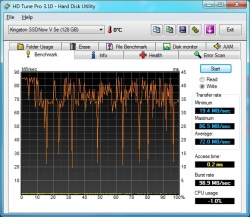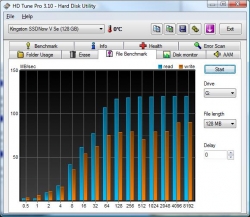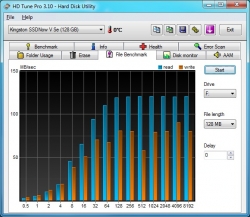DataMarck:
DataMarck tests the read rate, as well as the seek time of the drive.
 |
 |
| Performance (Vista) | Performance (Win 7) |
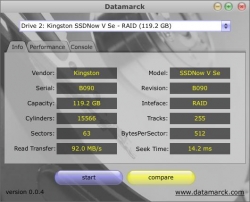 |
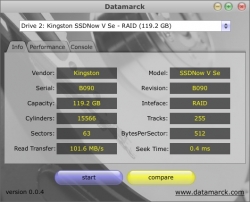 |
| Info (Vista) | Info (Win 7) |
The SSDNow V Series came in right around the posted read speed of 100MB/s at 92MB/s. Under Win 7, the drive managed to score higher than the posted speed, coming in at 101.6MB/s. I’m not entirely sure where DataMarck is getting its 14.2 ms seek time from, as the 0.4 ms result under Win 7 seems far more realistic.
HD Tune:
We used HD Tune to test and report on several aspects of the drive. By running the AAM test, we can determine the seek time of the drive on our system. Below we see that it comes out to 0.2ms. By using the info tab, we can see what partitions are on the drive and what supported features it has.
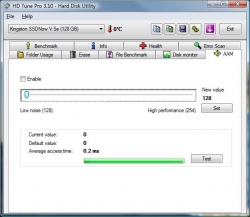 |
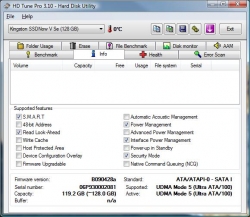 |
| HD Tune AAM Test | HD Tune Info |
We continue the testing with the hard drive benchmark and the file benchmark.
We see that the HDD benchmark is running a minimum read speed of 79.7MB/sec, with a maximum of 109.2MB/sec, and an average read speed of 100.3MB/sec. The Windows 7 setup still managed to score higher in every category. This bodes well for Microsoft and their new operating system. It’s good to see the progress that they’ve made in the short time since Vista’s release. Unless the drive is somehow miraculously offloading processes from the CPU, I think the reported CPU utilization of -1.0% under Windows 7 is in error and a prime example of why beta operating system benchmarks must be taken with a grain of salt. The other option is that Microsoft has somehow devised a way to crunch numbers on the hard drive (the wonders of a new operating system).
The write speed is shy of the proposed 80MB/s under both Vista and Windows 7. With the performance around 70MB/s, it is still within an acceptable range. The dip in write speed performance can possibly be attributed to the way in which HD Tune writes the files during the benchmark, as it is not specifically designed to benchmark solid state drives. Solid state drives do not write to their blocks in the same way that magnetic drives do, due to their wear-leveling algorithms.
